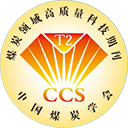Abstract:
The construction of intelligent coal mine and high-yield and high-efficiency mine puts forward higher requirements for intelligent technology of underground drilling in coal mine. This study reviews the evolution of intelligent drilling technology in underground coal mines, noting that after four development stages, namely underground remote manual control, surface remote manual control, surface remote automatic control and dual-mode automatic control, underground coal mine drilling technology is now in the intelligent drilling exploration stage. Based on expert database, machine learning and cloud system, this study summarizes the development of intelligent control technology of drilling condition parameters, which is the key core technology of intelligent underground drilling in coal mine. Regarding expert database method, it explores their primary applications in mining and outlines four developmental stages after their introduction to intelligent drilling, comparing the technical characteristics and advancements at each stage. In terms of machine learning, it summarizes the latest research achievements in model optimization, algorithm enhancement, and auxiliary control methods, clarifying the challenges and future research directions in each area. Concerning cloud systems, the study discusses the latest developments in oil extraction, geological exploration, and underground coal mine drilling. Considering current application conditions, the advantages and disadvantages of three kinds of intelligent control methods for drilling conditions are reviewed, and the problems of single control means and insufficient application of multi-function in intelligent drilling are analyzed. From the perspectives of technology extension, closed-loop control, multiple strategies and unified system, the deep integration application of intelligent control of working condition parameters and intelligent construction of coal mine is proposed, which provides theoretical support for the research of adaptive drilling technology based on multi-information fusion.



 下载:
下载: